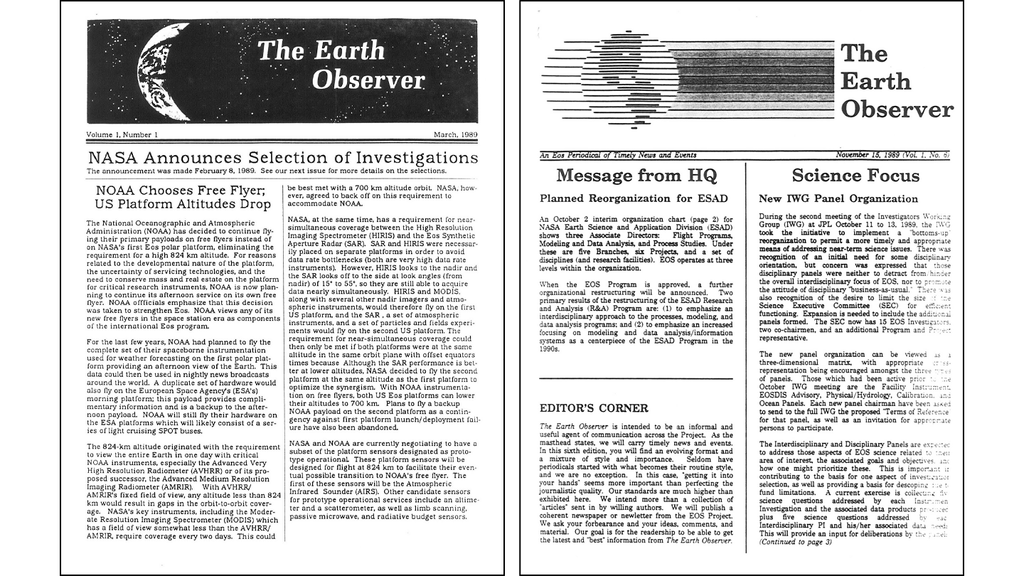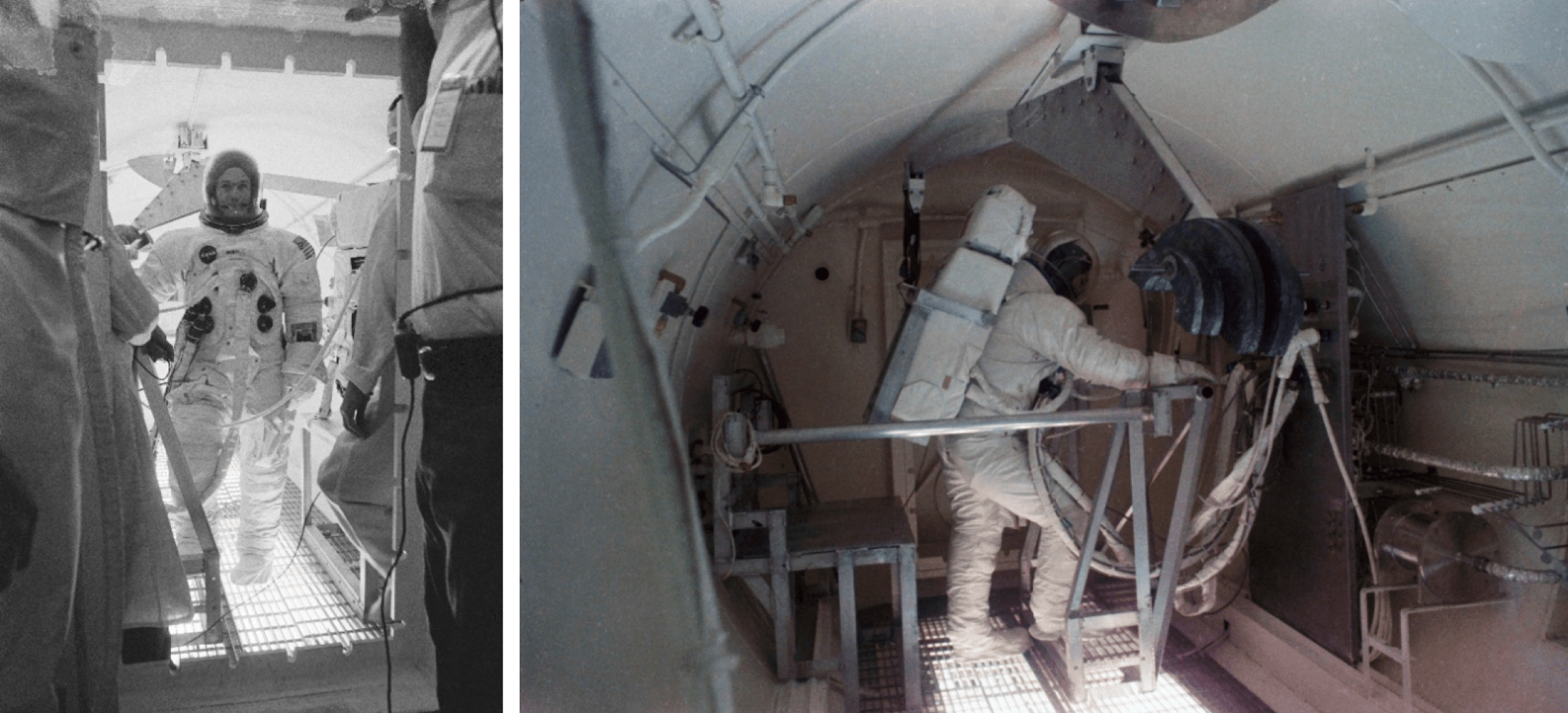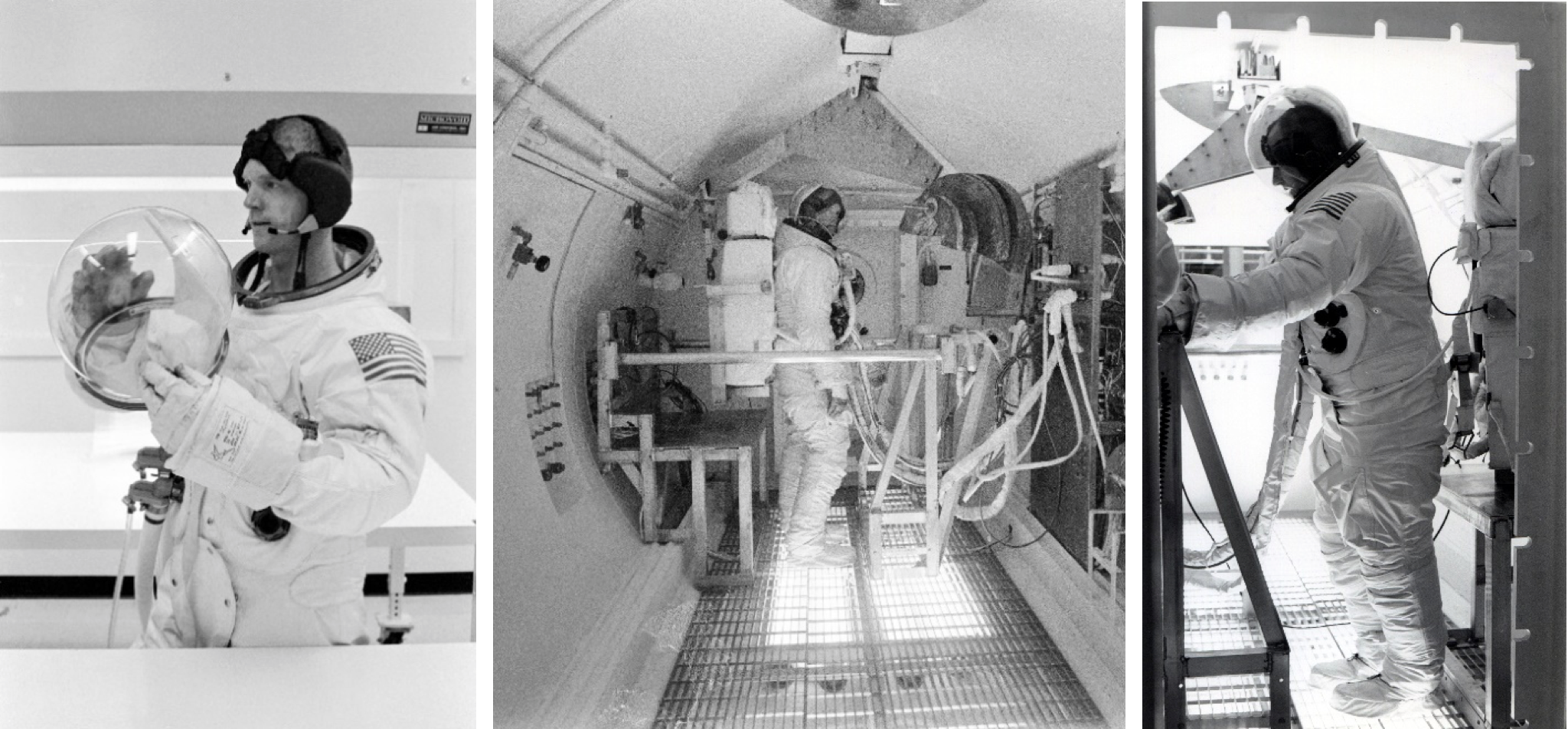In June 1968, engineers from the Crew Systems Division (CSD) at the Manned Spacecraft Center (MSC), now NASA’s Johnson Space Center in Houston, certified the first Apollo space suit Portable Life Support System (PLSS) flight unit during several vacuum chamber tests. The PLSS, more commonly known as the backpack, provided life support to astronauts during lunar surface extravehicular activity (EVA) moonwalks. Weighing 68 pounds on Earth, the PLSS pressurized the suit, supplied breathing oxygen, removed carbon dioxide, particulates and odors, provided cooling, and controlled humidity within safe and comfortable limits. The vacuum chamber certification of the PLSS was required prior to the backpack’s first test in space, then scheduled for the Apollo 8 Earth orbital mission in late 1968.
Hamilton Standard of Windsor Locks, Connecticut, manufacturer of the PLSS, shipped the flight unit to MSC in May 1968, where engineers first ran it through two uncrewed tests in CSD’s eight-foot vacuum chamber. On June 24, astronaut Thomas K. Mattingly completed the first four-hour crewed run in the chamber, transferring from the chamber’s life support system to the PLSS for the first time, a task that could not be completed during the LTA-8 testing in May. Astronaut Russell L. Schweickart, then assigned as Lunar Module Pilot (LMP) for Apollo 8 and scheduled to conduct the first Apollo EVA to test both the suit and the PLSS in space, conducted a three-hour chamber test on June 29. Later that day, Apollo 8 backup LMP Alan L. Bean completed a similar three-hour test. During the tests, the chamber simulated an altitude of up to 200,000 feet and the astronauts performed work activities such as stair-stepping to determine the ability of the suit and PLSS to handle metabolic loads. All three astronauts wore the new Apollo pressure suit which incorporated changes recommended after the Apollo fire, such as the use of non-flammable materials, and that NASA certified in January 1968 during tests in the same chamber. The PLSS performed exceptionally well during the runs, meeting all test objectives.
The successful certification of the Apollo PLSS during these tests cleared the way for the first Apollo EVA and brought the Moon landing one step closer.
For astronaut Mattingly’s recollections of the PLSS testing, please read his oral history with the JSC History Office.
For more on Apollo suits, see https://nescacademy.nasa.gov/catalogs/spacesuit.





























